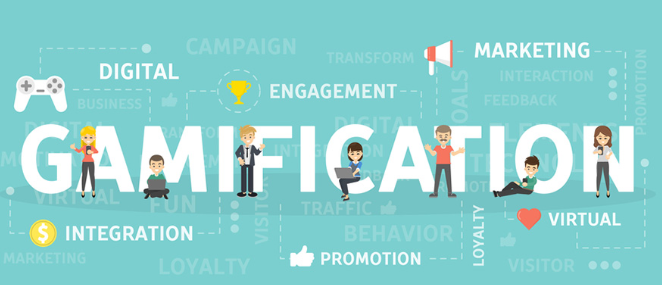
There is a new technique in casino gaming design; it is one in which the designer adds gameplay type-elements into non-gaming situations. This is called gamification, and it is used to provide a more player or user engaging environment or service.
It is the weaving of fun features into casino games, it adds in non-monetary rewards such as trophies and badges, little prizes that means a lot to the player. The addition of leader boards hugely increases the player’s desire to be the best.
Why Would You Want Your Name at the Top?
It means the player play longer to reach a higher or the highest position on the scoreboard. This is a reward in itself, all players can view the scoreboard, and with your name at the top, others know you are a top achiever. When you reach the number one position, you earn the highest prizes, so the reward is two-fold, you are seen as the best, and you win big!
Gamification and the UX Phenomenon in the 21st Century
Gamification fuels player engagement and by injecting more fun into the games and offer new incentives to the top players, play is prolonged. Casino use step-tracking devices and players enjoy the challenges. It is a great way to go into relax-mode over a weekend after a long week at work.
It inspires players to log in and participate, while it offers designers a whole new structure of designing. The goal is reaching the ultimate experience, less boredom and a whole lot more rewards. This way, players not only earn cash rewards; the rewards system is more frequent as it does not always include a cash-valued compensation.
Pitfalls in Gamification from a Designer Perspective
There is a massive challenge in perfecting gamification and several pitfalls to overcome; the three biggest pitfalls are the following:
Building the Perfect Game:
Gamification focuses on one thing, and that is to motivate the player to play longer to achieve a certain level or position on the scoreboard. For the designer, it means creating a fun environment in which the player wants to play and is not tricked into doing things they’d later regret. There is a thin line between the two.
Magic Design
The system the designer used, to gamify the game much be attractive; it needs to appeal to the player and at the same time, offer great virtual and monetary rewards.
Manipulation
Overdoing the features used to bring gamification could ultimately defeat the goal of giving players incentives vs completing tasks. The balance is almost more important than the challenge or design.
How Do You Get Gamification Perfect?
When you ask the design experts, it is clear that the creators of games need to know the player desires. They need to know which missions the player finds worth taking part in and what rewards are worth it for the player to try and achieve. It does not end there; the games need to be monitored to find out what type of player like the challenges, the age, sex and money spent by the players. How do they use the information? Find out next week!